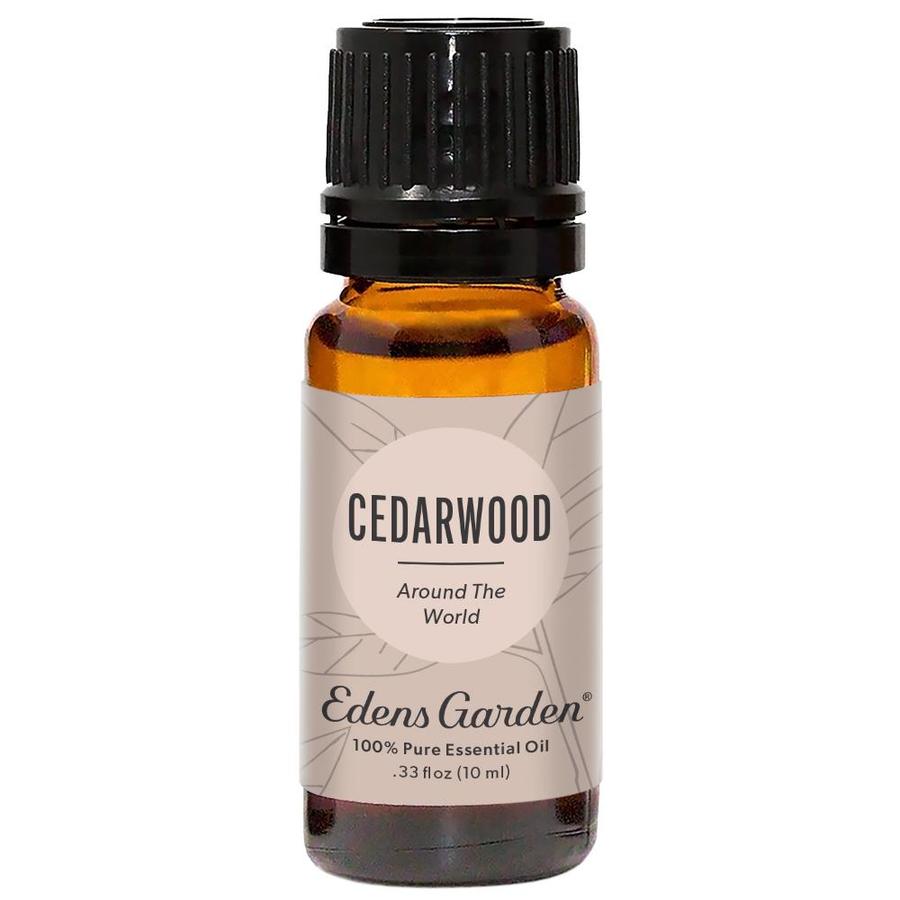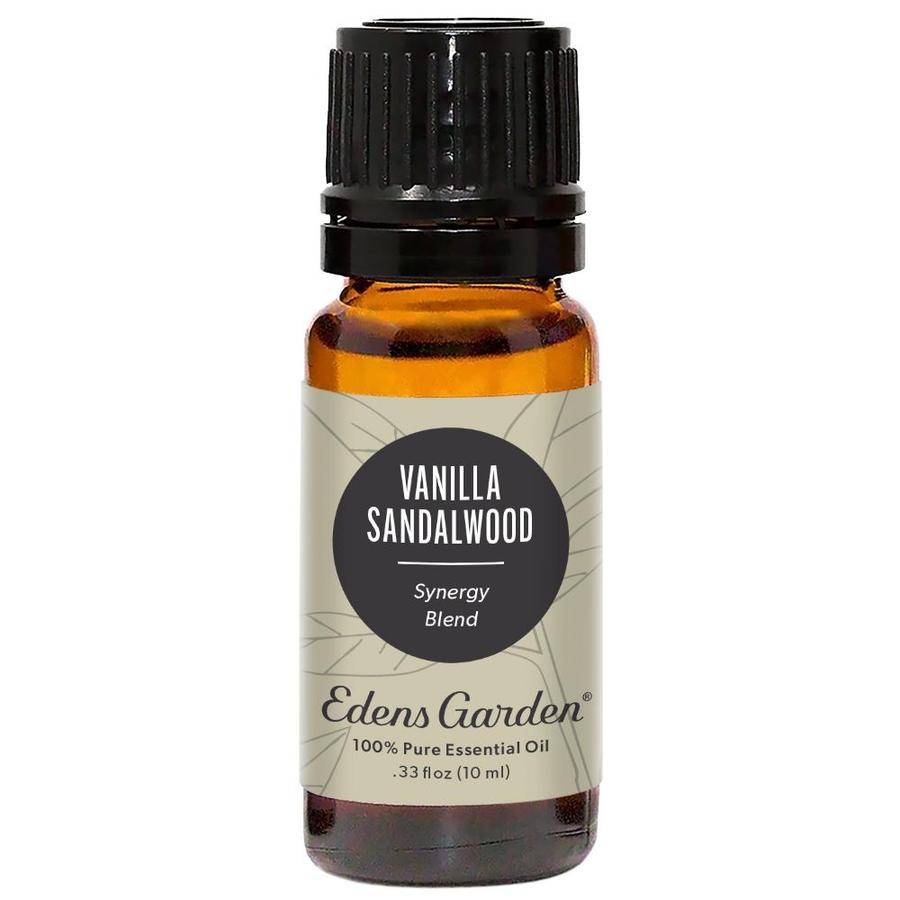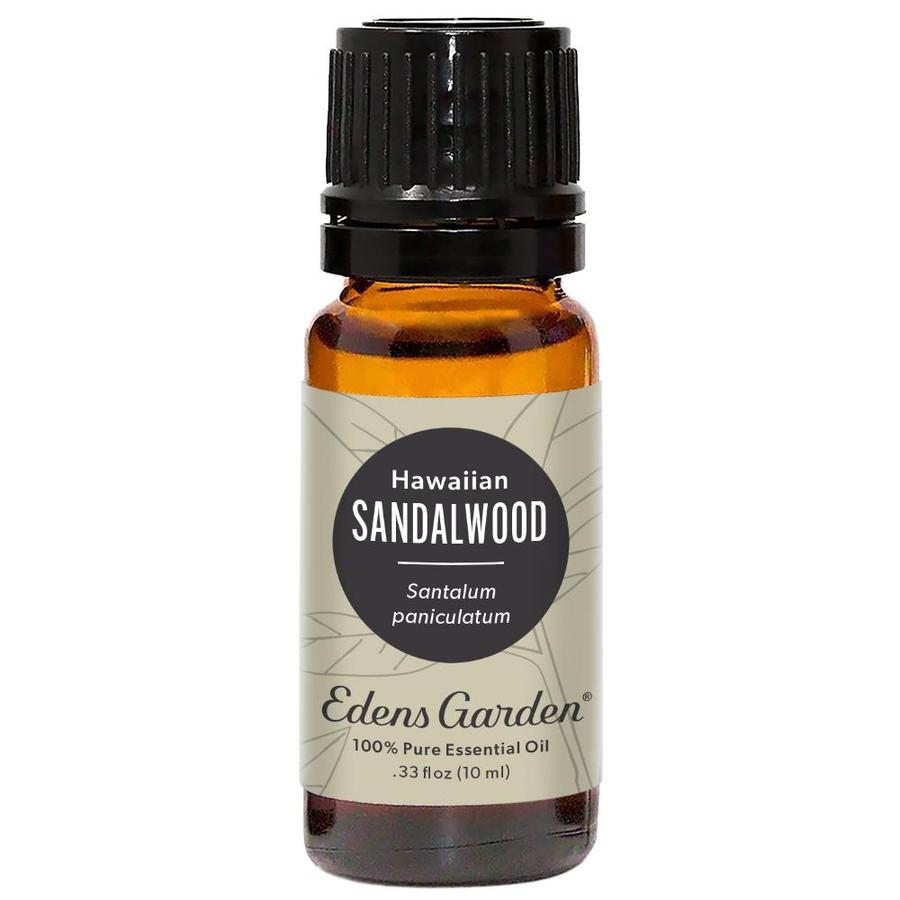Comparison Guide: Cedarwood vs Sandalwood

Cedarwood and Sandalwood are two popular essential oils derived from the wood of trees. Both have a warm, woody aroma that is deeply grounding and calming. This unique combination of aroma and soothing ability makes Cedarwood and Sandalwood ideal additions to essential oil perfume. Their woodsy aromas bring a note of masculinity and complexity to floral blends.
But what’s the difference between Cedarwood and Sandalwood? When should you pick one over the other?
In this short guide, we’ll talk about both oils’ aromatherapeutic, immune-boosting, and skin-brightening properties so that you can understand when to use each oil—and when to use both, together!
Cedarwood vs Sandalwood Oil
What are the similarities and differences between Cedarwood and Sandalwood oil?
Both Cedarwood and Sandalwood are prized in their indigenous ranges for their medicinal properties. These are both some of the best essential oils for skin due to their anti-inflammatory qualities and grounding aromas.
In fact, some recipes for homemade salves and blends may even state that you can substitute one for the other.
However, there are some major differences:
-
Provenance – Sandalwood comes from deciduous trees in the Santalum genus, while Cedarwood comes from evergreen Cedrus trees (cedar tree). Although the two can be found in some of the same forests, they are different varieties altogether.
-
Aroma notes – Flowering sandalwood trees produce a woody, smoky oil that is also slightly sweet. While Cedarwood oil has similar notes, not all varieties are sweet or musky.
-
Different properties – While both Cedarwood and Sandalwood are anti-inflammatory, their specific qualities differ. For example, you might want to reach for Sandalwood when you have a seasonal cold, but Cedarwood when a headache strikes.
Next, we’ll take a deeper dive into Cedarwood and Sandalwood essential oil, as well as different varieties of each.
Benefits of Sandalwood Essential Oil
Sandalwood oil has long been prized for its range of anti-inflammatory properties. This oil’s antiviral and antibacterial qualities make it an amazing dermatological aid that can:
-
Reduce the frequency of breakouts
-
Soothe minor skin irritation
-
Diminish bumps, warts, and raised spots
A 2017 review of Sandalwood in dermatology confirms that this may be the perfect oil for people seeking to repair their uneven skin tone and texture.
Beyond its use in skincare, these same properties impart other potential healing abilities. In India, Ayurvedic medicine uses Sandalwood for ailments, including:
-
Relieving sore throats
-
Cooling the body
-
Helping heal wounds
Use this oil in a diffuser to boost your immune system.
In aromatherapy, a few drops of Sandalwood can be used to promote attention and focus. At once grounding and energizing, this oil can help you when you’re studying, writing emails, or preparing yourself for an important conversation or negotiation.
Varieties of Sandalwood
Sandalwood trees have grown and evolved in different areas, which imparts slightly different qualities. At Edens Gardens, we offer three varieties of Sandalwood:
- East Indian – Smoky, sweet East Indian Sandalwood is the variety prized in Ayurvedic medicine and blends well with oils such as Sweet and .
-
Australian – Potent Australian Sandalwood has toasted and musky undertones that are great for perfumes, and for cultivating focus.
-
Hawaiian – Assertive Hawaiian Sandalwood is the least sweet of these three varieties, though it does have creamy, tropical undertones and blend well with citrus oil.
While all three varieties have similar benefits, you may prefer one aroma over another.
Vanilla Sandalwood Synergy Blend
Which Sandalwood should you choose? With the Vanilla Sandalwood Synergy Blend, you don’t have to.
Combining two varieties of Sandalwood with aromatic Vanilla and Myrrh, this essential oil has an aroma that is sweet and grounding. A natural aphrodisiac, it is ideal for aromatherapy and for use in skincare products.
Benefits of Cedarwood Oil
Cedarwood essential oil has had a long history of unique uses. From embalming in ancient Egypt to being used as an insecticide, to clearing germs, Cedarwood is a multifaceted essential oil.
At Edens Garden, we offer four unique types of Cedarwood. As with most oils in our selection, many people have a hard time choosing the right oil for their unique situation.
To help make that choice a little easier, we’ve broken down for you the differences and similarities between these fascinating oils.
Cedarwood Atlas
The Cedarwood Atlas is known for its similarity to the Cedar of Lebanon and for its fixture on the White House South Lawn. However, Cedarwood Atlas oil isn’t quite as well known as the tree from which it is produced.
-
Native to Morocco, Cedarwood Atlas is high in sesquiterpenes. It is a good choice for beard oil, facial serums and lotions for its astringent and skin-nourishing properties.
-
With sedative and calming attributes, it can be added to relaxing or sleep-enhancing blends.
-
Cedarwood Atlas is also commonly used for its benefits with breathing and helping to clear congestion.
What makes it unique from other Cedarwood oils is primarily its aroma. Cedarwood Atlas has a unique woody aroma that is unlike other cedarwoods. With sweet, green undertones and a dry finish, Cedarwood Atlas is typically classified as having a masculine aroma. It also blends well with other oils such as , and Berry.
Cedarwood Himalayan
In India, Cedarwood is especially sacred. Cedarwood Himalayan is used:
-
As an insecticide
-
For its antifungal properties
Aromatherapists refer to Cedarwood Himalayan as being calming and helpful for breathing, much like Cedarwood Atlas. It is also helpful as an anti-inflammatory agent and for its anti-infectious properties, making it a good choice to diffuse during the cold season.
Cedarwood Himalayan’s earthy aroma is woody with an overriding sweet, almost floral or fruit-like note. This essential oil is rounded and cool and blends well with Buddha Wood, Muhuhu, Patchouli, Sandalwood, and other woods. It can also be added as a woody base note to sweet, floral blends.
Cedarwood Texas
Sweet, smoky Texas Cedarwood is a softer aroma that is less assertive than the above varieties. Its properties include:
-
Calming and grounding – This confident oil is used in aromatherapy to cut through negative thinking and promote relaxation.
-
Combating headaches – One of our favorite pure essential oils for migraines, Cedarwood Texas can help reduce the tension and stress that often lead to headaches.
-
Bug repellant – A beautiful addition to body creams and other skincare products, this oil can also help keep insects at bay.
Because of its sweet, soft aroma, it is comparable to Sandalwood.
Cedarwood Virginia
Warm, woody Cedarwood Virginia isn’t the sweetest Cedarwood, but its clean aroma is an excellent base note for perfumery.
While all varieties of Cedarwood have anti-inflammatory properties, Cedarwood Virginia is especially well-suited for physical discomfort. It can help with:
-
Stiff joints
-
Sore muscles
-
Tension
Its aroma is also ideal for finding peace and calm.
Sandalwood Vs Cedarwood — Which Should You Buy?
As you can see, different varieties of Sandalwood and Cedarwood have unique properties. If you’re making a perfume, musky East Indian Sandalwood could bring the perfect depth and complexity, or fresh Virginia Cedarwood could add the right brightness.
Of course, it’s often the case that these two woody oils work best together.
Sandalwood and Cedarwood are a natural pairing because of their similarities, as well as their unique differences in terms of aroma and potential aromatherapeutic and healing benefits.
Check out our individual Sandalwood and Cedarwood essential oils as well as our essential oil blends with all natural ingredients at edensgarden.com.
Sources:
- Moy, Ronald L, and Corey Levenson. “Sandalwood Album Oil as a Botanical Therapeutic in Dermatology.” The Journal of clinical and aesthetic dermatology vol. 10,10 (2017): 34-39.
- Moy, Ronald L, and Corey Levenson. “Sandalwood Album Oil as a Botanical Therapeutic in Dermatology.” The Journal of clinical and aesthetic dermatology 10.10 (2017): 34-39. https://www.ncbi.nlm.nih.gov/pmc/articles/PMC5749697/
- “Sacred Sandalwood.” Maharishi Ayurveda. https://www.mapi.com/ayurvedic-knowledge/plants-spices-and-oils/sandalwood-is-sacred.html
- “Fact Sheet for Cedarwood Oil.” EPA. https://www3.epa.gov/pesticides/chem_search/reg_actions/reregistration/fs_PC-040505_1-Sep-93.pdf
- Lee, Yuk-Lan, Ying Wu, Hector W.H. Tsang, Ada Y. Leung, and W.M. Cheung. “A Systematic Review on the Anxiolytic Effects of Aromatherapy in People with Anxiety Symptoms.” The Journal of Alternative and Complementary Medicine 17.2 (2011): 101-108. https://www.liebertpub.com/doi/abs/10.1089/acm.2009.0277










Louise D. Spencer
October 18, 2021 at 8:34 am
I’m about to invest in my dream shop here in Memphis, TN, and I want you to know how much I enjoy reading everything I can get my hands on. I’m a retired chemist, and I love everything about Eden’s Garden, including the writing styles. Love it! Thanks so very much ( & please excuse the typos),
Louise Spencer
P.S. Keep on smiling:)😂😉😃🤗😘